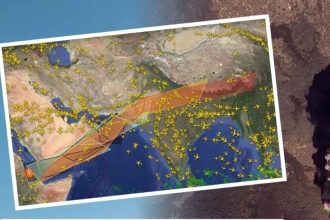Washington: Water scarcity in Pakistan could threaten all aspects of national economy, the International Monetary Fund warned on Monday, while blaming “lack of proper management” for this predicament.
Pakistan is among the world’s 36 most water-stressed countries and the situation gets worse as the population increases.
The report – “Is the Glass Half Empty or Half Full?” – examines the role of economic policy instruments and institutions in managing water challenges.
A case study of Pakistan notes that the country has the necessary natural endowment and world’s most extensive irrigation system. But “harnessing these assets requires a paradigm shift in water policy and management.”
It urges Pakistani authorities to focus on demand-side measures that promote conservation and control of excessive groundwater exploitation.
“The thrust of reforms needs to be on improving water-use efficiency in agriculture, which continues to dominate water consumption while escaping taxation at the federal level and bearing a light tax burden at the provincial level,” the report adds.
To deal with this problem, the IMF urges greater engagement of stakeholders at the local level in water management and capacity building of water management institutions, as well as reforming agriculture taxation systems in the provinces.
The nexus between water and electricity as the other areas calling for reform of water and electricity subsidies, the report adds.
It notes that canal water in Pakistan is vastly underpriced, recovering only one-quarter of annual operating and maintenance costs.
Meanwhile, agriculture, which consumes almost all annual available surface water, is largely untaxed. “The combination of these policies leads to overuse of water,” it warns.
The IMF argues that the pricing structure of major crops in Pakistan has impeded the adoption of more efficient technology and less-water-intensive crops.
Per capita annual water availability in Pakistan has dropped, fundamentally due to population growth, from 5,600 cubic metres at independence to the current level of 1,017 cubic metres, and is projected to decline further under the current infrastructure and institutional conditions.
Demand for water is on the rise, projected to reach 274 million acre-feet (MAF) by 2025, while supply is expected to remain stagnant at 191 MAF, resulting in a demand-supply gap of approximately 83 MAF.
Concerns over this widening gap between water supply and demand are compounded by certain characteristics of Pakistan’s geography, climate, and hydrological cycle:
Pakistan depends on a single source, the Indus system and its tributaries, for most of its water supply needs.
Fed mostly by snow and glacier melt in the greater Himalayas, water availability in the Indus system is highly seasonal, with 85pc of annual river flows occurring during the June-September period, which coincides with the concentration of rainfall in the monsoon. Rainfall varies from 1,500 mm per year in northern Punjab to 150 mm per year in upper Sindh province.
Pakistan is exposed to extreme weather conditions, including severe episodes of floods and droughts that wreak significant damage on the country’s agricultural, livestock, and water infrastructure. Much of these costs have been attributed to lack of adequate storage capacity and control structures. Total dam storage in Pakistan represents only 30 days of average demand, compared to 1,000 days for Egypt and 220 days for India.
The IMF urges Pakistan to “develop an integrated approach to water resource management that prioritises conservation and sustainable water use through improved cost recovery, upgrading infrastructure, and bringing agriculture under the tax regime.”
The suggested reforms include:
Reform water tariffs and cost recovery: The prevalent irrigation water charges (abiana) only recover 24pc of the annual operating and maintenance costs, and collection is only 60pc of total receivables, imposing a drain on the government budget.
The pricing structure for major crops is uniformly based and, thus, does not reflect differential water consumption, even though, for instance, rice consumes 60pc more water than cotton does.
This has impeded adoption of more efficient technology and high- value crops.
Furthermore, excessive irrigation water use has resulted in poor water quality (36pc of groundwater is highly saline).
Similar problems of inadequate tariff and low cost recovery have afflicted urban drinking water. Tariffs for water utilities for consumption in households are quite low and have not been revised for several years. Tariff collection varies from 20 to 80pc across cities.
Access to piped water supply in rural and small towns remains inadequate.
Increase investment in water infrastructure:
Currently more than 35pc of the population lacks access to safe drinking water. Harnessing Pakistan’s huge hydro potential through construction of new dams and hydropower projects also deserves serious attention. With hydro potential of 50,000MW of electricity generation, Pakistan could overcome its energy shortage several times over, notwithstanding the seasonality involved in hydropower generation. Of this potential, only 13pc has been developed so far at a relatively low cost of 2 cents/kilowatt hour.
The country’s two existing mega hydropower dams—Mangla and Tarbela, commissioned in 1967 and 1976 respectively—are losing their storage capacity because of rapid silting. In both urban and hydro sectors, reliance on private investment and capital needs to be an integral part of the solution.
The IMF argues that “there are both equity and efficiency rationales for bringing agriculture within the tax net.”
Because of the country’s arid and semi-arid climate, agriculture in Pakistan is predominantly irrigated (90pc) and consumes about 95pc of annual available surface water. Though the bulk of farmland is irrigated through the canal system, farmers utilise water from other sources, including groundwater exploitation, and this has increased significantly in recent decades: subsidised water and electricity tariffs have induced adoption and expansion of electric pumps to tap groundwater at an alarming rate.
Approximately 60pc of farm-gate-delivered water in Punjab comes from tube wells. Yet agriculture is largely untaxed (contributing less than 0.1pc of total tax revenues), even though it accounts for 21pc of GDP and employs 43pc of the population.
The IMF argues that water can serve as an engine of economic growth and regional trade expansion in Pakistan. The country has the necessary natural endowment and is blessed with the world’s most extensive irrigation system. Harnessing such potential needs virtually a paradigm shift in reframing water policy and management in a national context that emphasises demand-side measures that would promote conservation and control of excessive groundwater exploitation.
“Moving forward, the thrust of policy reform needs to be on improving water-use efficiency in agriculture, which continues to dominate water consumption while escaping taxation at the federal level and lightly taxed at the provincial level,” says the report.
This would require greater engagement of stakeholders at the local level in water management and capacity building of water management institutions.
The IMF also urges encouraging the provinces to reform their agriculture taxation systems in the context of the forthcoming NFC award could be a major step in overcoming the entrenched political interests of powerful landowners and bringing agriculture into the tax net. The nexus between water and electricity is the other area calling for reform of water and electricity subsidies.
Reforming NFC revenue-sharing mechanisms and phasing out electricity subsidies are two major reform areas supported by the current IMF Extended Fund Facility for Pakistan.





